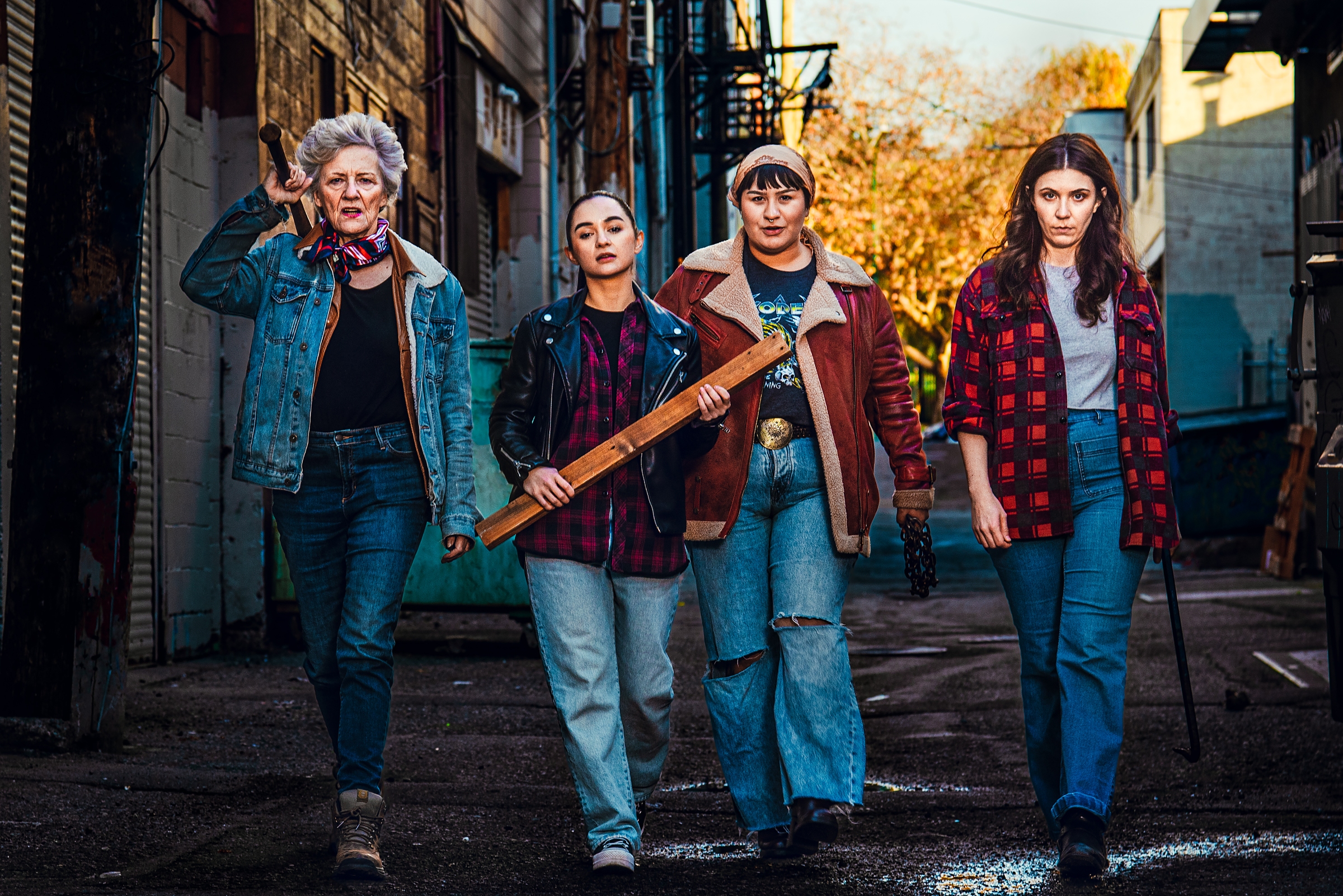
“Sunrise Betties” is a subversive theatrical experience, presented by Vancouver’s own ITSAZOO Productions. Depicting Vancouver of the 1970’s, the play takes place entirely in an expansive basement suite.
Loosely based on the thrilling exploits of the Clark Park Gang, the fictional Sunrise Betties are an all-women gang that operates a den of criminal activities in a pre-gentrification, blue-collar neighborhood of East Van. The gang comprises of four young women (played by Meaghan Chenosky; Kaitlyn Yott; Kelsey Kanatan Wavey; Merewyn Comeau) under the aegis of matriarch Shirley (played by Patti Allan). Steeped in experiences of systemic neglect, abuse and abandonment, each character has a unique background and motivation for indulging in the hard life of a seasoned criminal. Be it torching new cars or bashing up men with baseball bats, the young gangsters seemingly live as free-spirited, spunky brats. The unexpected arrival of a cop (played by Sebastien Archibald), opens up a series of transgressions leading to an unending crescendo of escalations.

Playwright Cheyenne Rouleau has consulted numerous experts and former members of Vancouver-based gangs to develop a script that leans into true events without glorifying criminal activity, police corruption and interpersonal violence. Instead, the twisted tale of human egos is packaged with empathy for those embedded in unyielding cycles of survival-based aggression. There are elements like bodily harm, fake-blood, drugs and violent body language – this plot is not for the weak of heart (and anyone under the age of 16). That being said, the story is delivered with generous helpings of irreverent humor. “Sunrise Betties” is a rewarding watch for thriller and history buffs alike.
The choice to portray an all-female gang allows for imaginative retellings of interpersonal dynamics between boisterous women of the bygone era: salacious gossip, dating drama and a bittersweet lesbian romance. The Betties also possess an impeccable fashion sense with their timeless bell-bottoms, denim jackets and flannel overcoats. Other set elements like flowery couches, lampshades, a record player, David Bowie records, stashes of hard drugs and vintage fashion magazines transport the audience to the era of youth rebellion and hippie aspirations.

The audience is dispersed all around the periphery of the dingy basement on informal seats such as barstools and mid-century couches. Despite their violent streaks and multiple shades of gray, the audience is made to root for the female protagonists – a stunning subversion of the bystander effect. The dynamic pacing of the story is paralleled by the swift movement of the cast – one moment the audience is focussed on the record player and the couch, the next we are drawn towards a scuffle at the bar table on the far end. At those moments where the cast is obscured by physical barriers (like a wall or pillar), other sensory elements (gunshots, screams, music) fill in the gaps. This makes for a very intriguing (sometimes frustrating) theatrical experience. Overall, there is not a single moment where the audience is lulled to boredom.
– Annapoorna Shruthi
